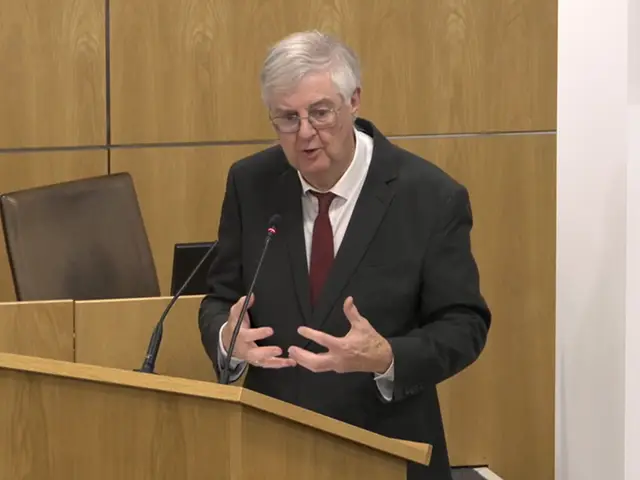Business
Binance Coin: Building Bridges in the Crypto Space

Introduction to Binance Coin (BNB)
Binance Coin (BNB) is the native cryptocurrency of the Binance platform, one of the world’s largest cryptocurrency exchanges. Launched in 2017 through an Initial Coin Offering (ICO), BNB was initially an ERC-20 token on the Ethereum blockchain before migrating to its own Binance Chain in April 2019. BNB is integral to the Binance ecosystem, used for transaction fees, staking, and as a utility token across various Binance services. For those interested in enhancing their investment knowledge, visit this resource link that offers valuable educational resources that can help individuals make informed decisions in the crypto space.
The Concept of Blockchain Interoperability
Blockchain interoperability refers to the ability of different blockchain networks to communicate and interact with each other. Traditionally, blockchains operate in silos, each with its own rules, protocols, and tokens, limiting their usability. Interoperability solutions aim to bridge these gaps, allowing seamless data and asset transfers between disparate blockchain networks. This is crucial for enhancing the functionality and adoption of blockchain technology across various use cases.
What Are Cross-Chain Bridges?
Cross-chain bridges are protocols designed to enable the transfer of data and assets between different blockchain networks. They work by locking tokens on the original blockchain and minting equivalent wrapped tokens on the target blockchain, ensuring interoperability without compromising security. There are two main types of cross-chain bridges:
- Trusted Bridges: Rely on a central entity or custodian to validate and manage transfers, such as the BitGo-managed Wrapped Bitcoin (wBTC).
- Trust-Minimized Bridges: Utilize smart contracts and algorithms to facilitate transfers, minimizing the need for trusted intermediaries.
Binance Bridge: A Key Player in Cross-Chain Solutions
The Binance Bridge is a prominent cross-chain bridging service that allows users to convert select cryptocurrencies into wrapped tokens on the Binance Smart Chain (BSC). It supports major assets like Bitcoin (BTC), Ethereum (ETH), Litecoin (LTC), and more, enhancing their interoperability within the BNB ecosystem. The process involves locking the original assets in a smart contract and issuing an equivalent amount of wrapped tokens on BSC, enabling seamless cross-chain transactions.
Recent Innovations and Investments
Binance Labs, the venture capital and incubation arm of Binance, has made significant investments to enhance cross-chain functionality. A notable investment is in Rango, a cross-chain decentralized exchange (DEX) and bridge aggregator. Rango facilitates easy transactions across various blockchain ecosystems, supporting over 60 blockchains, 70+ DEXes, and 20+ bridges. This investment aims to drive DeFi growth by improving interoperability and providing users with reliable cross-chain functionality (Binance).
Security and Risks of Cross-Chain Bridges
While cross-chain bridges offer numerous benefits, they also pose security risks. Smart contract vulnerabilities are a major concern, as demonstrated by high-profile hacks like the Ronin and Wormhole bridge exploits. In March 2022, the Ronin Bridge, associated with the play-to-earn game Axie Infinity, was hacked, resulting in the theft of over $600 million in ETH and USDC. Similarly, the Wormhole Bridge was hacked in February 2022, leading to a loss of approximately $325 million. These incidents highlight the importance of robust security measures and ongoing audits to mitigate risks associated with cross-chain bridges.
The Future of Cross-Chain Bridges with Binance Coin
Looking ahead, Binance aims to further enhance cross-chain interoperability and security. Future developments may include integrating additional blockchain networks and improving existing protocols to ensure seamless and secure transactions. Binance’s vision is to create a unified crypto space where assets and data can move freely across various blockchains, fostering innovation and broader adoption of blockchain technology.
Conclusion
Binance Coin plays a pivotal role in the crypto space, particularly in enhancing blockchain interoperability through cross-chain bridges. These bridges address the challenges of isolated blockchain networks, enabling seamless asset transfers and data communication. Despite the security risks, ongoing innovations and investments by Binance and other stakeholders are paving the way for a more interconnected and efficient blockchain ecosystem. As the technology continues to evolve, cross-chain bridges will likely become integral to the broader adoption and functionality of blockchain applications.
Business
Senedd approves £116m transitional relief for business rates

BUSINESSES facing sharp hikes in tax bills after the 2026 revaluation will see increases phased in over two years after the Senedd backed a new transitional relief scheme.
Senedd Members unanimously approved regulations to help businesses which face significant rises in non-domestic rates bills after a revaluation taking effect in April 2026.
The Welsh Government estimates the transitional relief will support 25,000 ratepayers at a cost of £77m in 2026/27 and £39m in 2027/28. The partial relief covers 67% of the increase in the first year and 34% in the second.
Mark Drakeford, Wales’ finance secretary, stressed the £116m scheme comes on top of permanent rate reliefs which are currently worth £250m a year. He said ratepayers for two-thirds of properties will pay no bill at all or receive some level of relief.
The former First Minister told the Senedd: “In providing this transitional relief scheme, we are closely replicating the scheme of relief we provided following the 2023 revaluation – supporting all areas of the tax base in a consistent and straightforward manner.”
The Conservatives’ Sam Rowlands expressed his party’s support for the transitional relief scheme which will help ratepayers facing sharp increases after the 2026 revaluation.

He said: “We are grateful that the Welsh Government has at least brought forward a scheme that will soften the immediate impact for thousands of Welsh businesses.
“We also understand that if these regulations are not approved or supported… this relief scheme will not be in existence. Many businesses across Wales would face steep increases with no protection at all and that is certainly not an outcome we would want.”
But the shadow finance secretary warned businesses up and down Wales are worried about the increase in rates that they are liable to pay.
Advocating scrapping rates for all small businesses in Wales, Mr Rowlands said: “We’ve heard first-hand from many of those in the hospitality and leisure sector, some of whom are facing increases of over 100% in the tax rates they are expected to pay.”
Responding as the Senedd signed off on the scheme on December 16, Prof Drakeford said the Welsh Government had to wait for the UK budget to know if funding was available. As a result of the time constraints, the regulations were not subject to formal consultation.
Prof Drakeford agreed with Mr Rowlands that voting against the regulations would not improve support, only eliminate the transitional relief package before the Senedd.

Earlier in Tuesday’s Senedd proceedings, former Tory group leader Paul Davies warned Welsh businesses have already been hit with some of the highest business rates in the UK.
He said: “The latest business rates revaluation has meant that some businesses are now facing rises of several hundred per cent compared with previous assessments…
“Whilst I appreciate that a transitional relief scheme will help some businesses manage these changes, the reality is that for many businesses it’s not enough and some businesses will be forced into a position where they will have to close.”
Business
Pembrokeshire industrial jobs ‘could be at risk’ as parties clash over investment

TRADE unions have warned that hundreds of industrial jobs in Pembrokeshire could be at risk without stronger long-term support for Welsh manufacturing, as political parties set out competing approaches ahead of the Senedd elections.
TUC Cymru says its analysis suggests 939 industrial jobs in Pembrokeshire could be vulnerable if investment in clean industrial upgrades were withdrawn, warning that policies proposed by Reform UK, and to a lesser extent the Conservatives, pose the greatest risk to industrial employment.
The warning comes as the union body launched its “Save Welsh Industry – No More Site Closures!” campaign at events in Deeside and Swansea, calling on all political parties to commit to a five-point plan to protect and future-proof Welsh industry.
According to TUC Cymru, jobs at risk locally include 434 in automotive supply chains, 183 in rubber and plastics and 75 in glass manufacturing. The union body says these sectors rely on continued investment to remain competitive and avoid offshoring.
TUC Cymru said its modelling focused on industries most exposed to closure or relocation if industrial modernisation and decarbonisation are not delivered. It argues that without sustained public and private investment, Welsh manufacturing faces further decline.
A GMB member working at Valero in Pembrokeshire said: “It’s clear Nigel Farage has no clear plan. I can see this industry collapsing under his policies. We need support, not division. His way will lead to job losses across the board and the lights will go out.”
The union body stressed that all parties need to strengthen their industrial policies, but claimed Reform UK’s stated opposition to net zero-related investment would place the largest number of jobs at risk across Wales, estimating that almost 40,000 industrial jobs nationally could be affected. Conservative policies were also criticised, though the TUC said the likelihood of job losses under the Conservatives was lower.
Labour has rejected claims that Welsh industry is being neglected, pointing to recent investment announcements made at the Wales Investment Summit, where more than £16bn worth of projects were highlighted as being in the pipeline across Wales.
Ministers said the summit demonstrated growing investor confidence, with projects linked to clean energy, advanced manufacturing, ports, digital infrastructure and battery storage, and thousands of jobs expected as schemes move from planning into delivery.
Labour has argued that public investment is being used to unlock private sector funding, particularly in industrial regions, and says modernising industry is essential to keeping Welsh manufacturing competitive while protecting long-term employment.
At UK level, the party has also highlighted its National Wealth Fund and GB Energy commitments, which it says will support domestic supply chains, reduce long-term energy costs for industry and help secure both existing and future jobs.
Opposition parties and some business groups have questioned whether all announced projects will translate into permanent employment, arguing that greater clarity is needed on timescales and delivery.
Reform UK has argued that scrapping net zero policies would cut public spending and reduce costs for households and businesses, while the Conservatives have pledged to roll back climate-related targets and reduce regulation on industry.
Unions dispute those claims, warning that higher electricity prices and a lack of investment would make Welsh industry less competitive internationally.
TUC Cymru President Tom Hoyles said Welsh industry needed urgent action from all parties to survive and thrive in the 21st century, warning that policies which sought to turn back the clock could put thousands of Welsh jobs at risk.
With industrial areas including Flintshire, Neath Port Talbot and Carmarthenshire also identified as facing significant pressures, the future of Welsh manufacturing is expected to remain a key political issue in the run-up to the Senedd elections.
Business
New digital toolkit aims to future-proof rural Welsh businesses in AI search era

A NEW digital toolkit developed in Ceredigion is being hailed as a potential game-changer for small businesses in rural Wales, as artificial intelligence reshapes how customers discover local services online.
Created by Antur Cymru Enterprise, the SMART Busnes programme is giving Welsh SMEs an early foothold in Answer Engine Optimisation (AEO) – a rapidly emerging discipline focused on how businesses appear within AI-generated search responses.
As AI-driven tools increasingly replace traditional search results with instant, conversational answers, SMART Busnes – supported by the UK Shared Prosperity Fund – has launched one of the first practical AEO toolkits available in Wales.
The initiative is being led by Digital Business Advisor Lynne Rees and centres on a new insight framework known as Agentic AEO. The approach is designed to help rural and micro-businesses remain visible online as search engines and AI platforms prioritise structured, easily interpreted information over conventional keyword-based webpages.

Kevin Harrington, Project Manager for SMART Busnes, said the shift represents a fundamental change in how businesses need to think about their online presence.
“AI search is here to stay, and our Agentic AEO insight series isn’t a tweak – it’s a reset,” he said.
“It’s about helping Welsh SMEs show up wherever customers search: on Google, on social media, and increasingly within AI-generated answers. This gives rural businesses access to the kind of digital advantage that large brands often pay thousands of pounds for.”
Traditional search engine optimisation is already being overtaken by AI-led systems such as Google’s Search Generative Experience and tools like ChatGPT, which provide direct responses rather than lists of links.
For small businesses, this presents a growing risk. If online content is not structured in a way AI tools can understand, businesses may fall below the point where potential customers ever see them.
Agentic AEO focuses on improving clarity, structure and user intent across websites, social media platforms and Google Business Profiles. By presenting information in formats AI systems can easily process, businesses can improve both visibility and credibility within automated responses.
The SMART Busnes AEO Insight Series provides practical support, including step-by-step guidance on restructuring webpages, examples of effective layouts, and tailored AI prompts to help business owners produce optimised content quickly and affordably. Even modest changes – such as a website review, targeted content update or short advisory session – can influence how a business appears in search results over the coming year.

Antur Cymru chief executive Bronwen Raine said the programme was designed to help businesses adapt to long-term change.
“SMART Busnes was created to support small businesses through change, not simply to chase trends,” she said.
“The Agentic AEO insight series shows how Shared Prosperity Fund investment is driving genuine innovation, building confidence, skills and sustainability across local economies.”
With many SEO providers in Wales still focused on older techniques, SMART Busnes is positioning Ceredigion and the wider Mid and West Wales region at the forefront of AEO adoption.
By translating emerging digital theory into accessible, practical support, the programme aims to strengthen resilience among rural enterprises and ensure they remain visible, trusted and competitive in an AI-led future.
More information about SMART Busnes and the support offered by Antur Cymru Enterprise is available via the organisation’s website.
-

 Crime1 day ago
Crime1 day agoMilford Haven man jailed after drunken attack on partner and police officers
-

 News4 days ago
News4 days agoDyfed-Powys Police launch major investigation after triple fatal crash
-

 Crime1 day ago
Crime1 day agoTeenager charged following rape allegation at Saundersfoot nightclub
-

 Crime2 days ago
Crime2 days agoMan charged with months of coercive control and assaults
-

 Crime3 days ago
Crime3 days agoMan sent to Crown Court over historic indecent assault allegations
-

 Crime5 days ago
Crime5 days agoMan spared jail after baseball bat incident in Milford Haven
-

 Crime3 days ago
Crime3 days agoMilford Haven man admits multiple offences after A477 incident
-

 Crime2 days ago
Crime2 days agoWoman ‘terrified in own home’ after ex breaches court order













